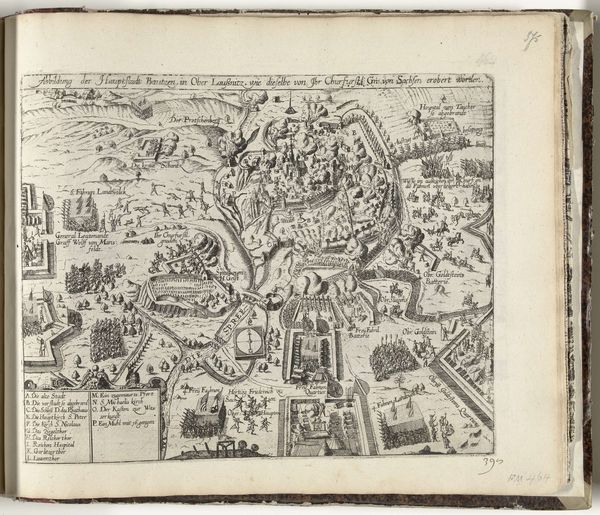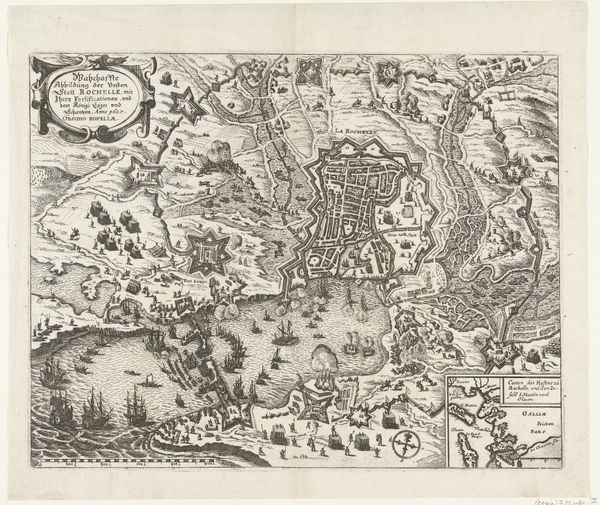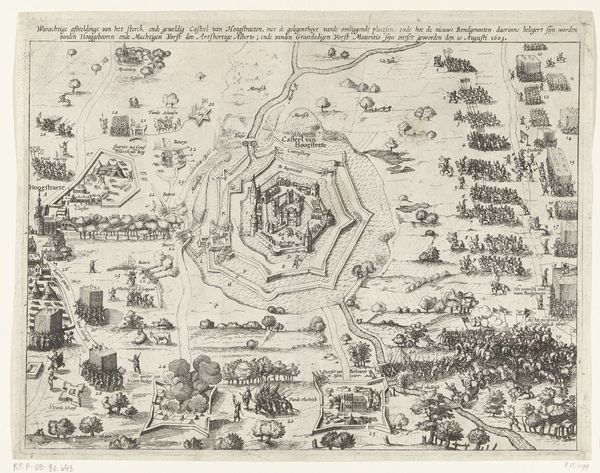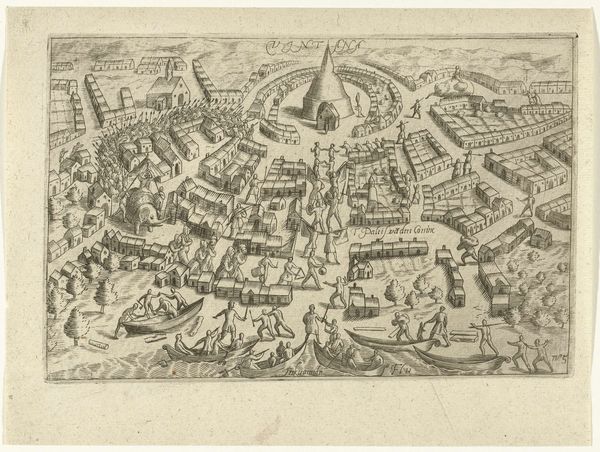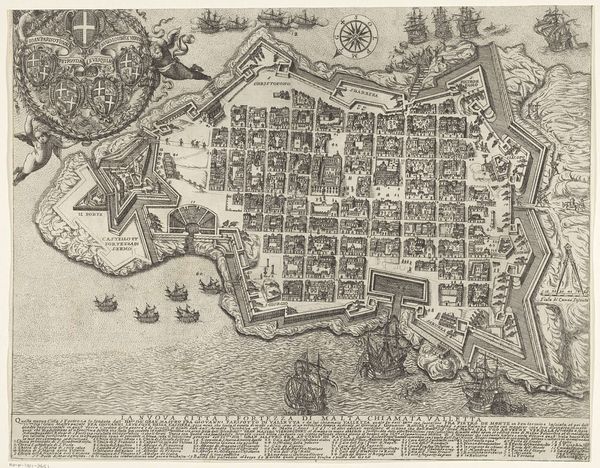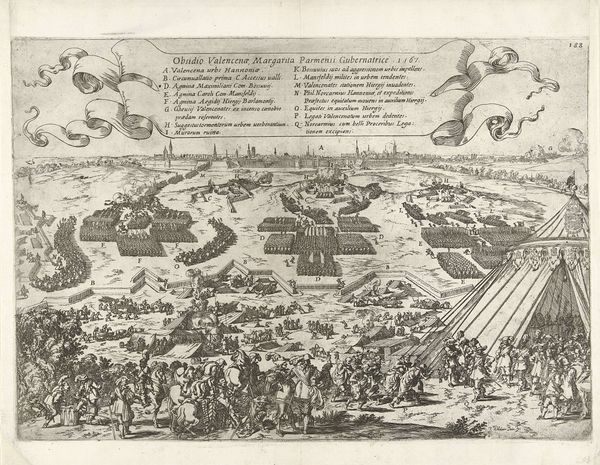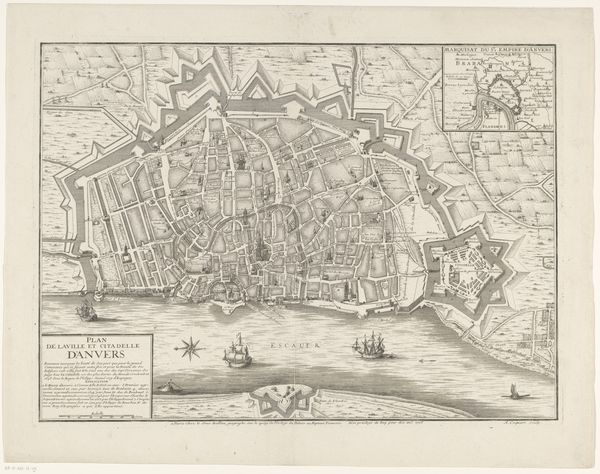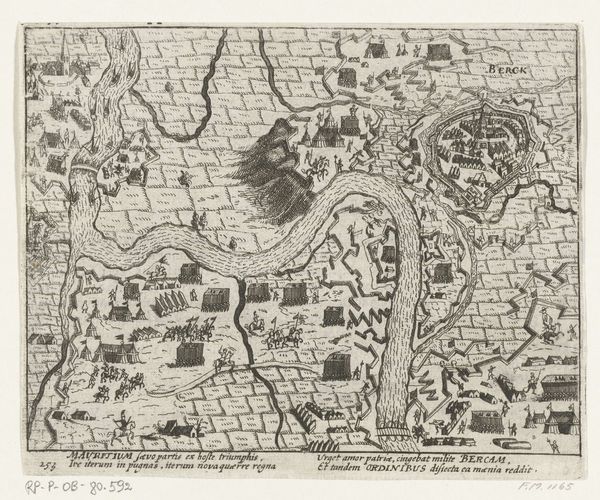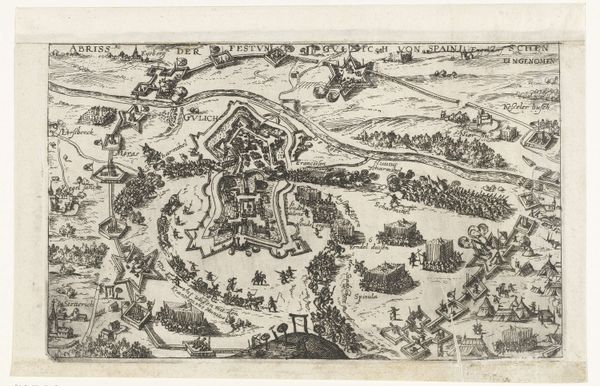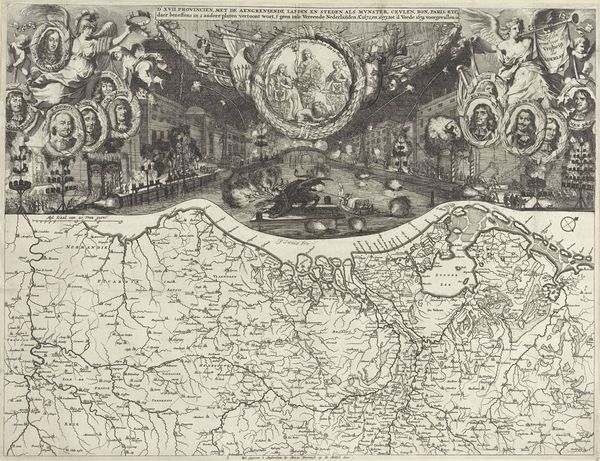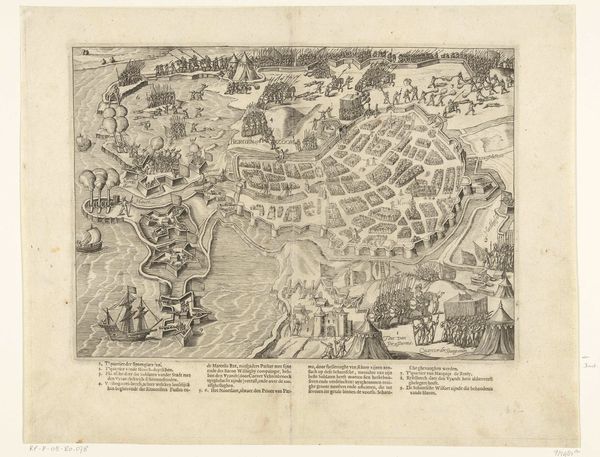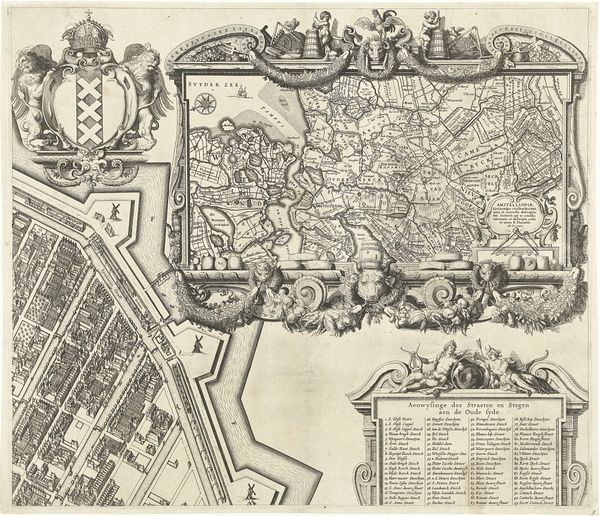
print, engraving
#
baroque
# print
#
landscape
#
cityscape
#
history-painting
#
engraving
Dimensions: height 490 mm, width 580 mm
Copyright: Rijks Museum: Open Domain
Curator: Here we have Romeyn de Hooghe’s engraving from 1684, "Bombardement van Luxemburg door de maarschalk de Créquy." It depicts the 1684 bombardment of Luxembourg by French forces under Marshal Créquy. Editor: Wow, the chaos is incredibly organized, isn’t it? At first glance, it feels like I'm staring at an ant farm… or rather, an ant city in the process of being annihilated by some overzealous kid with a magnifying glass. Curator: It’s a baroque history print, intended to document and, arguably, glorify a military event. Prints like these played a key role in shaping public perception and political narratives in the 17th century. The institutional patronage of such images should be understood. Editor: "Glorify" might be too strong a word. To me, there’s something inherently melancholy about cityscapes subjected to conflict, that such meticulously laid plans and manicured spaces can all go up in smoke. Curator: These cityscapes served a function: to showcase the strategic importance of the location being attacked or defended. Here, De Hooghe provides a detailed overview of Luxembourg’s fortifications and layout. Editor: Right, so the artist wasn't merely depicting random acts of mayhem but using violence as a frame. And given that perspective, all those tiny figures become… well, terribly vulnerable. They don't feel grand. It’s like watching a tragedy unfold in miniature, if that makes sense. Curator: The detailed accuracy also underscores the ambition of Louis XIV's military campaigns. It showed viewers what his armies were capable of achieving and reminded everyone of France's dominance at the time. Editor: Hmm. I was more inclined to contemplate about fleeting greatness when you realize everything we create, including grand designs like cities, are temporary—as destructible as they are impressive. The impermanence makes everything feel so poignant! Curator: That is a perceptive, reflective interpretation! Art offers such potential for both critical investigation and empathetic introspection. Thank you. Editor: Likewise, my friend. Thanks for illuminating all this historical context—it does deepen the feeling of poignant loss that hangs over this piece.
Comments
No comments
Be the first to comment and join the conversation on the ultimate creative platform.
